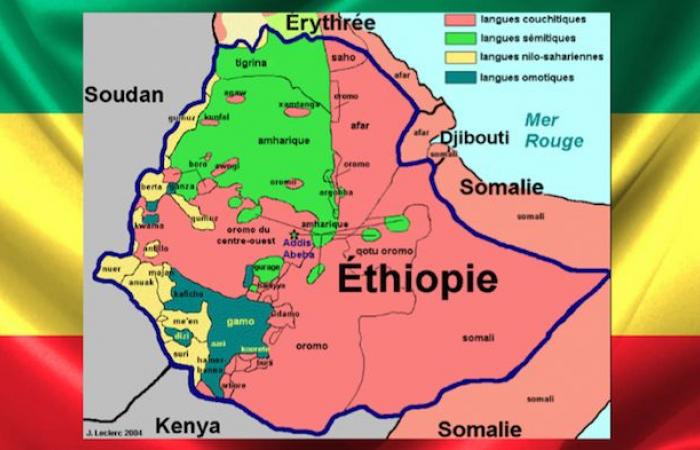#Other countries : Ethiopia now considers itself at “war” against the dissident region of Tigray, where military operations were launched Wednesday, raising fears for the stability of this regional juggernaut populated by more than 100 million inhabitants.
Here is an overview of the main forces facing Abiy Ahmed, Prime Minister and Nobel Peace Prize winner 2019:
A protesting Tigray
Tensions between Abiy and the leaders of Tigray skyrocketed after the latter’s organization of regional elections in September, an act of defiance against Addis Ababa, which considers the election “illegitimate”.
Due to the coronavirus pandemic, Ethiopia postponed the elections, initially scheduled for August, and extended the terms of national and regional deputies, as well as that of Abiy. For this reason, the Tigrayan leaders no longer recognize his government as legitimate.
READ ALSO: Ethiopia on the brink of another civil war
Almost all of the seats were taken by the Tigray Peoples Liberation Front (TPLF), which historically ruled the region.
A minority ethnic group among the 70 or so peoples who make up Ethiopia’s “ethnic federalism”, the Tigrayans represent only 6% of the population.
After leading the armed struggle against the communist Derg regime until its fall in 1991, the TPLF nevertheless dominated the ruling coalition in Addis Ababa for almost 30 years, until the accession of Abiy Ahmed in 2018. .
More recently, tensions with Addis Ababa have crystallized over control of military personnel and equipment in Tigray, which is home to a significant portion of the Ethiopian armed forces.
On Wednesday, Abiy accused the Tigray authorities of attacking two military bases in the region and launching a retaliatory military operation.
READ ALSO: Ethiopia: green light from Parliament for state of emergency imposed on Tigray
Since then, Tigray has been placed under a state of emergency and the two camps have mentioned a situation of “war”, but no precise information is currently available on the operations in progress.
A troubled Oromia
Abiy is Ethiopia’s first head of government from the country’s main ethnic group, the Oromo. But it is far from being unanimously supported in its Oromia region, which surrounds the capital Addis Ababa.
Oromo nationalists consider that he has not done enough to respond to the political and economic marginalization they believe they have suffered since the former domination of the Tigrayans.
Rights organizations denounce repressive abuses in Oromia since the arrival of Abiy, in particular in the context of the fight against the Oromo Liberation Army (OLA), an armed group accused of assassinations, attacks, robberies banks and kidnappings.
READ ALSO: War in Tigray: Ethiopia wants to be reassuring in the face of growing concerns
Tensions in Oromia took a particularly violent turn after the June murder of Hachalu Hundessa, a popular Oromo singer. Riots have left at least 160 dead and more than 9,000 people, including journalists and opposition leaders, have been arrested.
At the beginning of November, an attack attributed to the OLA by the regional authorities left at least 32 dead within the Amhara community, the second largest in the country.
A fragmented South
Several ethnic groups grouped together in the very diverse Region of Nations, Nationalities and Peoples of the South (SNNPR) have long demanded more autonomy.
These demands saw a resurgence after the arrival of Abiy, who initially displayed a desire to democratize Ethiopian politics.
READ ALSO: Ethiopia: United States calls for “immediate” restoration of peace in Tigray
In a referendum in November 2019, the Sidama overwhelmingly supported the creation of their new region – which is becoming the 10th in the country.
The spotlight has more recently turned to the Wolaita area, whose residents want to emulate the Sidama, but have not yet held a referendum.
In August, at least 17 people were killed in the area after protests sparked by the arrest of a Wolaita political leader.
*We just want readers to access information more quickly and easily with other multilingual content, instead of information only available in a certain language.
*We always respect the copyright of the content of the author and always include the original link of the source article.If the author disagrees, just leave the report below the article, the article will be edited or deleted at the request of the author. Thanks very much! Best regards!
These were the details of the news Ethiopia, a deeply fragmented African colossus for this day. We hope that we have succeeded by giving you the full details and information. To follow all our news, you can subscribe to the alerts system or to one of our different systems to provide you with all that is new.
It is also worth noting that the original news has been published and is available at en24news and the editorial team at AlKhaleej Today has confirmed it and it has been modified, and it may have been completely transferred or quoted from it and you can read and follow this news from its main source.

